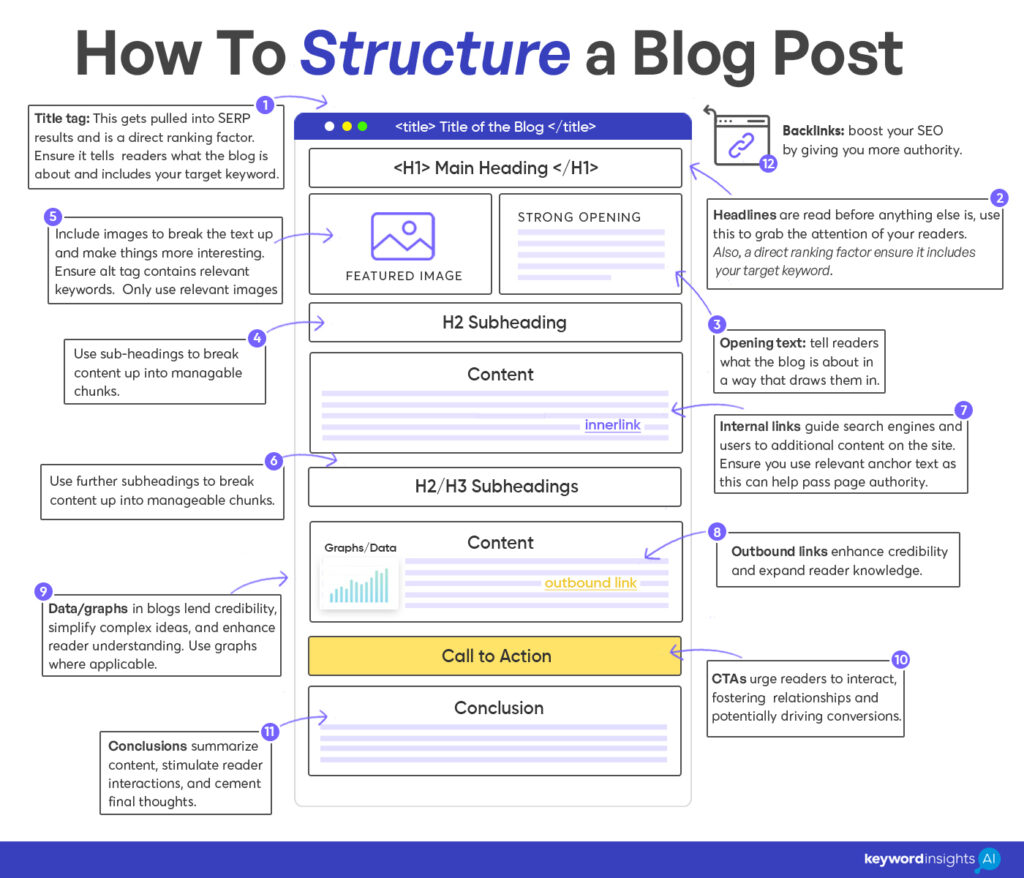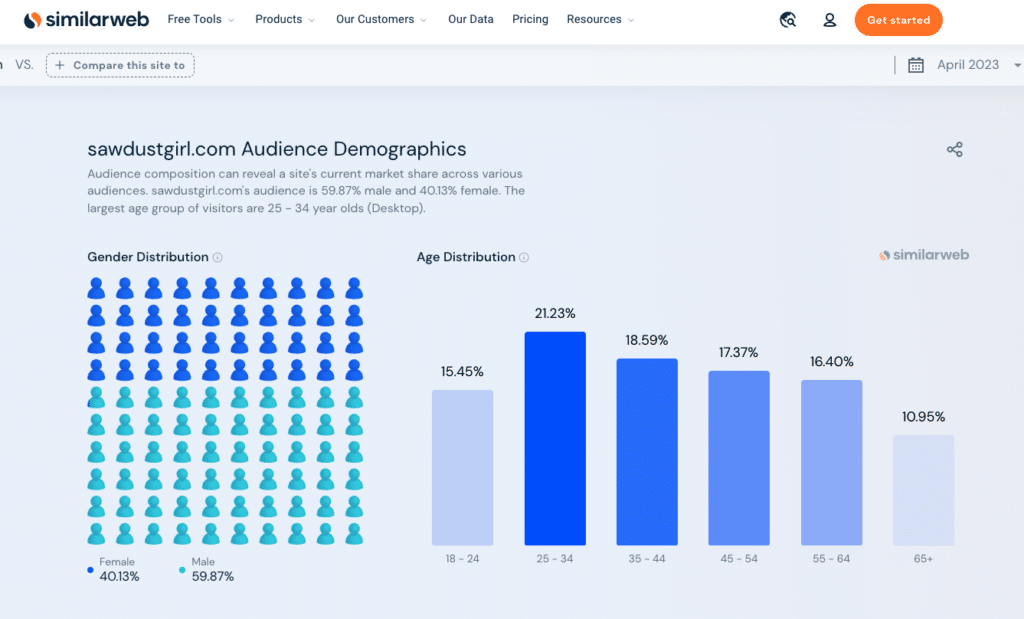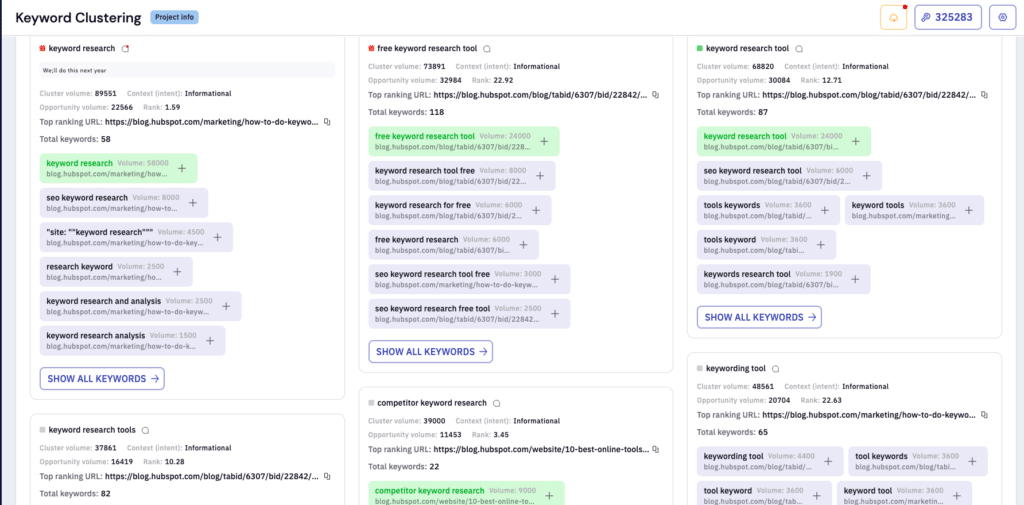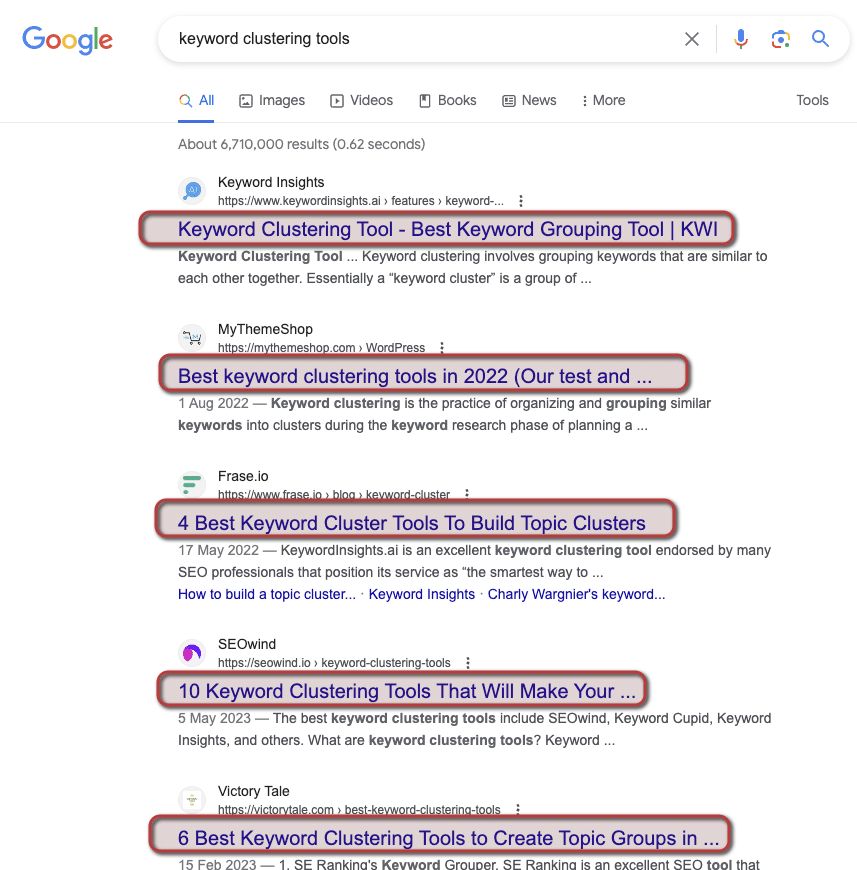Home / Blog / Fundamentals / How To Structure a Blog Post – Creating the Perfect Blog
How To Structure a Blog Post – Creating the Perfect Blog

May 30, 2023
Share to
Hello :). If Google’s been kind to us, you’re here so that you can learn to structure your blog post like a pro. Why is structure important, you ask? Well, no matter how insightful your content is, without proper structure, it’s like a gourmet meal served on a cracked plate.
Here’s what we’ll cover: we’ll start by understanding your audience and choosing an engaging topic. Then we’ll tackle crafting a catchy title and an irresistible intro. We’ll discuss organizing your thoughts logically in the body, rounding off with a powerful conclusion. Plus, we’ll guide you through SEO and strategies to promote your post effectively.
So, are you ready to craft beautifully structured blog posts that readers can’t resist? Let’s get started on this journey to blog perfection. Buckle up, and let’s dive in!

What do we mean by a blog post?
Personally, I sometimes bristle at the word ‘blog’. It makes me think of a backpacker in Indonesia keeping a diary and sharing tales of their adventures. Now, if you’re here reading this guide, I’m guessing you’re not looking to chronicle your adventures in a far-off land. Rather, you’re more interested in creating an informative piece of content or a guide. If that’s the case, you’re in the right place. A well-crafted blog post, or as I like to call it, a “guide”, is a powerful communication tool. It can build credibility, foster trust, and drive traffic to your website or platform.
Importance of structuring a blog post
Why does structuring a blog post matter? Look, you might have the most brilliant insights or the most valuable advice to offer, but if your blog post resembles an overgrown jungle more than a well-tended garden, your readers may not stick around. A well-structured blog post, on the other hand, is like a breath of fresh air. It guides the reader from point A to point B smoothly, without getting them lost in a maze of thoughts and ideas. It ensures that your message comes across loud and clear, and it keeps your readers engaged. In a nutshell, structuring your blog post is about creating a clear path for your reader to follow, helping them absorb and appreciate your content. It’s a must if you want to keep your readers hooked and coming back for more.
Understanding your audience
Importance of knowing your audience
Imagine this—you’re performing a stand-up gig. You’ve got killer jokes, but they’re all cricket-related, and you’re in front of a crowd that wouldn’t know a wicket from a bat. Not quite the roaring laughter you expected, eh?
The same principle applies to your blog post. It doesn’t matter how eloquent your prose is or insightful your points are, if it doesn’t resonate with your readers, it won’t make an impact. So, first and foremost, you need to know who you’re writing for—understanding their interests, needs, and challenges is key to creating content that truly speaks to them.
Tips to identify your target audience
Start with your existing customers or followers. What are their common characteristics or interests? Are they fitness enthusiasts, busy parents, tech geeks, or gourmet chefs? Surveys and feedback forms can be great tools to get a feel for your audience’s tastes.
Look at your competitors’ audience too. Who are they engaging with? Don’t just copy what they’re doing, but take note of what works and what doesn’t. Engage in social listening—look at the comments and conversations happening in your field on social media. All these can give you valuable insights into who your target audience might be.
Tools like SimilarWeb and Sparktoro can also help you understand your target demographic and their interests much better.

How audience affects the structure of a blog post
Once you’ve got a handle on who your audience is, it’s time to reflect on how this understanding shapes your blog post. Imagine you’re writing for busy parents; they’d appreciate shorter, bite-sized sections they can read while waiting for their kid’s ballet class to finish. Or say your audience is tech-savvy folks; they might appreciate in-depth explanations and technical jargon that would scare off a general reader.
The structure of your blog post should cater to the reading habits, knowledge level, and interests of your audience. From the tone of voice and language you use, to the examples, depth of information, and even the length and format of the content—it all needs to be tailored to your audience. Remember, you’re not writing for yourself, but for them. And when you structure your blog post with the reader in mind, that’s when your content truly shines.
Deciding on a relevant topic
Importance of topic relevance
You’ve got to understand, picking a topic isn’t like plucking an idea out of thin air. You can’t just write about the dream you had last night or your favourite pizza topping (unless, of course, your audience consists of avid dream analysts or pizza connoisseurs).
The topic you choose needs to be relevant to your audience. Why? Because relevant topics address the questions your audience is asking, solve the problems they’re grappling with, or pique their interests. Writing on relevant topics helps ensure that your blog post isn’t just skimmed over or, worse, ignored entirely. Instead, it will resonate with your readers, making your blog post a must-read piece that holds their attention. You can write about “tangential content” however, but that’s for a separate guide altogether.
How to brainstorm effective topics
Feeling a little stuck on the topic front? Happens to the best of us. Luckily, brainstorming is a brilliant way to unclog that well of ideas. Start by looking at industry trends, news, or common questions in your field. What’s currently making waves in your industry? What burning questions keep popping up in forums, comment sections, or your customer emails?
Don’t shy away from your competitors’ blogs either. What topics are they covering? Can you offer a new perspective or go more in-depth? And let’s not forget about keyword research. Use SEO tools to find out what terms your audience is searching for. Again, this is an entirely separate guide on its own.
Remember, brainstorming is about getting all ideas out there, no matter how wild or whacky. You can sift through for the gems later.
Strategies for selecting the best topic
Alright, you’ve got a list of potential topics as long as your arm. Now what? It’s time to pick the best of the bunch. But how do you decide which one gets the spotlight? Well, here are a few strategies.
First, consider your audience. Which topic would be most relevant and valuable to them? Also, think about what’s unique to you or your brand. Can you provide insights on a topic that no one else can?
Don’t forget to consider the scope of each topic. A topic too broad can result in a blog post that’s vague and unfulfilling, while an overly narrow topic may not give you enough to write about. If you’ve done keyword research and have a large list of keywords, consider using a keyword clustering tool to quickly work out which keywords should be grouped together and targeted on the same page, and which need their own separate pages.

Finally, think about the potential for engagement. Which topic would stimulate comments, shares, or likes? After all, a blog post is not just about disseminating information, but about sparking a dialogue with your audience.
With these strategies in hand, you’re well on your way to selecting a winning topic that will draw in your readers and keep them hooked till the very end.
Crafting a compelling blog title
The role of the title in a blog post
Sometimes referred to as “meta title” (although this is technically incorrect), the title is the little thing we see in the search engine result pages.

You also see them in your browser tabs

A title is the first thing a potential reader sees. It’s like a shop’s display window—if it’s appealing, folks are going to want to come in and explore.
The title sets the tone and gives the reader an idea of what they’re going to get. It has to be engaging enough to entice them to click, while accurately representing the content. Get this right, and you’re well on your way to luring readers in. But a title that’s misleading or lacklustre? That’s like turning the ‘closed’ sign on your shop door. It’s also a direct ranking factor for SEO. It literally tells search engines what your page is about. If you don’t know how to change your page title refer to your Content Management System (CMS) documentation. You’re looking for any information on how to change page/meta titles.
Techniques for creating catchy and SEO-Friendly titles
Think about your audience and what would resonate with them. A dose of curiosity, a promise of valuable information, or even a spark of humour could do the trick. If you’re stuck, try ChatGpt ;). Give it a prompt like “Make a funny/catchy title for a guide titled x,y,z”.
Try to keep your titles concise yet impactful. Long-winded titles can get cut off in search engine results, so aim for about 55 characters. And don’t forget to include your main keyword—it’s an SEO must-have. But be sure to weave it in naturally, we’re not writing for robots after all.
Using numbers can also make your title more enticing (e.g., “5 Ways to Improve Your Blog Post Structure”). This offers a sense of what the reader can expect, and who doesn’t love a good list, eh? Also, numbers, especially odd numbers (weirdly), have better click-through rates (the number of people who view the link on the search engine page and then “click-through”).
Examples of effective blog post titles
I hate clickbait titles as much as the next person, but there does seem to be a common pattern. Successful titles tend to look like this:
- “7 Secrets to Cooking the Perfect Steak”
- “Why Your Morning Routine Isn’t Working and How to Fix It”
- “The Beginner’s Guide to Investing in Cryptocurrency”
- “10 Unbelievable Facts about the Human Brain”
- “How to Turn Your Hobby into a Thriving Business”
Notice how these titles are intriguing, offer value, and would likely contain keywords relevant to the post’s content? That’s the winning combination you’re aiming for when crafting your blog post title. Also, again I hate it, but “The Ultimate Guide” to anything seems to work. That being said, I’m sick of seeing “The Ultimate Guide” so read this guide on alternative titles to “The Ultimate Guide“.
Remember, the key to an effective title is ensuring it succinctly communicates what your content offers while also intriguing your audience enough to click or engage.
Creating an engaging opening for your blog post
Importance of a strong opening
You might have heard the saying, “You never get a second chance to make a first impression.” Well, your introduction is that first impression in the world of blog posts.
An effective introduction sets the stage for what’s to come. It should intrigue your reader, give them a reason to stay, and ideally, convince them to read until the end. An introduction that misses the mark, on the other hand, could send your reader clicking the back button faster than a rabbit chased by a hound.
Components of an engaging introduction
So, what makes an engaging introduction? Here’s the recipe. First, you need a hook—something that grabs your reader’s attention and makes them want to read more. This could be a provocative statement, an interesting fact, a compelling question, or a relatable anecdote.
Next, you need to lay out what the reader can expect from your post. Give them a brief overview of the topic and what they’ll gain by reading on. This is your value proposition—it’s like saying, “stick around, this will be worth your time”.
Finally, add a dash of personality. Let your unique voice shine through. The internet is saturated with content, but only you can write from your unique perspective. That’s what sets you apart from the crowd.
Strategies for hooking your readers from the start
Now, how do you hook your readers from the get-go? Well, here are a few strategies. Start by addressing your reader directly, making them feel involved and valued. Use language that resonates with them—this is where knowing your audience comes in handy.
Start with a powerful statement, an intriguing question, or a captivating story. But remember, the goal is to reel your reader in, not to shock or confuse them.
Lastly, remember to keep it concise and engaging. Your introduction is just the appetizer—the main course is yet to come. So, make it tasty enough to whet your reader’s appetite, but leave them hungry for more.
Here are some examples of (in my opinion) some great introductions:
- Powerful Statement: “In the vast expanse of the universe, a single discovery has the power to redefine our place in it. Brace yourself, for within the following pages lies the key to unlocking the secrets of time travel.”
- Intriguing Question: “What if you could turn back the hands of time and change the course of history? Imagine the possibilities, the ripple effects that a single decision could create. In this journey, we explore the tantalizing concept of rewriting our past and shaping our future.”
- Captivating Story: “Picture this: a small fishing village tucked away along the rugged coastline, where whispers of a legendary sea creature echo through the mist. As the villagers gather on the shore, a young boy steps forward, his eyes blazing with determination. This is the tale of courage, mystery, and the pursuit of the extraordinary.”
Remember, these introductions are meant to capture the reader’s attention and create a sense of anticipation. Feel free to customize them based on the specific context and topic of your writing.
Organising the body of the blog post
We’ve navigated past the introduction, and now we’re sailing into the heart of the matter—the body of your blog post. This is where the magic happens. It’s where you deliver on the promises made in your title and introduction.
The body of your blog post is where you delve into your topic, expand on your points, and convey your main message. It’s not a place for waffling or meandering tangents. Each paragraph should serve a purpose, whether it’s to inform, persuade, explain, or entertain, it should contribute to your overall message.
Tips for Creating Effective Headers and Subheaders
Now, let’s chat about headers and subheaders. They’re like signposts on a winding road, guiding your reader through your content. They break up text, making it more digestible, and highlight the main points of each section.
When crafting headers and subheaders, keep them clear and descriptive. They should give a snapshot of what the section is about. And, if you can, try to weave in relevant keywords—SEO loves a well-placed keyword in a subheading. Ensure you nest the correct headings under one another too.
Understanding Heading Levels
Heading levels are an integral part of blog post structure. They help organise your content, making it easier for readers and search engines to navigate. They range from H1 to H6, with H1 being the main heading—usually the title of your blog post—and the other levels indicating subheadings.
Utilising H2s: Main Section Headings
After your title (the H1), your blog post should be broken up into main sections, each with its own H2 heading. Think of H2s as the chapter titles of your post, guiding your reader through the different points you’ll be discussing. These should be clear, concise, and reflective of the content within that section.
For instance, in this guide, “Crafting a Compelling Title”, “Creating an Engaging Introduction”, and “Organizing the Body of the Blog Post” are H2 headings—each one introducing a new main section of our discussion.
Nesting H3s Under H2s
Within these main sections, you may have sub-points or related topics you want to discuss. That’s where H3s come in handy. They’re subheadings that nest under your H2s, further breaking down your content into digestible chunks. For example, the heading above “Tips for Creating Effective Headers and Subheaders” is an H3 under the main H2 section which is “Organising the body of the blog post”.
Going Deeper: H4s, H5s, and H6s
For particularly complex or multi-faceted sections, you might need to break down your content even further. That’s where H4, H5, and H6 headings come into play. These would nest under your H3s (or H4s in the case of H5s, and so on), offering even more detailed breakdowns of your content.
However, in most blog posts, you won’t need to go beyond H3 or maybe H4 headings. Too many heading levels can overcomplicate your structure, making it harder for readers to follow. In fact, the last 3 heading have been H5’s on this post.
Using Images and Multimedia Effectively
Next on the agenda: images and multimedia. These aren’t just fancy garnishes—they can make your blog post more engaging, relatable, and memorable. Images can illustrate points, infographics can present data in a digestible way, and videos can provide a change of pace or a more in-depth exploration of a topic.
But remember, each image or piece of multimedia should serve a purpose. Don’t just chuck in a stock photo for the sake of it. And always ensure you have the rights to use the images or multimedia you choose. Nobody likes a copyright infringement lawsuit, do they? Of course, you can leverage recent advancements in AI tools like Midjourney or Dall E to create original, royalty-free images just the way you want them.
Strategies for Logical Structuring and Sequencing
Finally, let’s consider the structure and sequence of your blog post. A well-structured post isn’t a random collection of thoughts—it’s a carefully planned journey. It should flow logically, with each point building on the last and leading naturally to the next.
To achieve this, start by outlining your post before you start writing. Group related points together and decide in a logical order. Our content brief generator tool can help massively with the process of outlining the perfect blog. Alternatively, our AI writing assistant can actually produce the outline for you in seconds.
Transitions are also key. They’re the bridges that link your points together, guiding your reader from one idea to the next seamlessly. And don’t forget to summarise or wrap up each section before moving on to the next. This gives your readers a moment to absorb what they’ve just read before moving on to the next point.
With these strategies, you can create a blog post body that’s as engaging and easy to navigate as a riveting page-turner.
Writing a Convincing Conclusion
Right, let’s dive into the last lap—writing the conclusion. After immersing your reader in the body of your blog post, the conclusion serves as a neat wrap-up. It’s where you reiterate key points, drive your message home, and bid your reader farewell—ideally leaving them with something to think about or act upon.
A strong conclusion can reinforce your message and leave a lasting impression. It’s your final opportunity to engage your reader, provide them with value, and cement your authority on the topic.
Tips for Crafting an Impactful and Concise Conclusion
Now, what makes a conclusion impactful and concise? First off, it should recap the main points of your post without regurgitating the content word-for-word. Instead, summarise your main arguments or findings in a fresh way—like giving your reader the condensed version of your post.
Your conclusion should also provide closure. After your reader has journeyed through your post, you don’t want to leave them hanging. Whether you tie it back to your introduction, answer a question posed at the beginning, or simply provide a satisfying wrap-up, a sense of completion is crucial.
And remember, even though it’s the end, your conclusion should still be engaging. Keep your tone consistent and your language compelling to the last full stop.
Incorporating Calls-to-Action
The cherry on top of a well-written conclusion is a well-placed call-to-action (CTA). This is where you encourage your reader to take a specific action, whether it’s leaving a comment, signing up for your newsletter, checking out a product, or sharing your post on social media.
A good CTA is clear, direct, and incentivised. Don’t just tell your reader to do something—explain why they should do it. What’s in it for them? Will they gain more knowledge, receive a discount, and become part of a community?
Adding a CTA to your conclusion transforms your blog post from a one-way conversation into an interactive dialogue. It encourages engagement, fosters relationships with your readers, and can even drive conversions. Now that’s a strong finish!
Optimizing Your Post for SEO
Basic Principles of SEO
With your blog post written and structured to perfection, there’s one last step before hitting publish: SEO optimization. SEO, or Search Engine Optimization, is the practice of making your content more discoverable by search engines. And who doesn’t want their content to be easily found, right?
The crux of SEO is understanding what your target audience is searching for—what keywords they’re using, what type of content they want to see, and what questions they’re asking. Your job is to provide the answers to these queries in a way that’s easily understood by both your readers and search engines.
And it’s not just about getting people to your site but getting the right people—those who are genuinely interested in what you have to say and are more likely to engage with your content or take your desired action.
How to Choose and Use Keywords Effectively
Keywords play a starring role in SEO. They’re the terms that your target audience uses to find content like yours. So, how do you choose and use them effectively?
Firstly, conduct keyword research using tools like Google Keyword Planner, Moz, Ahrefs or our very own Keyword Discovery tool. Look for relevant keywords with a high search volume and, depending on your site’s authority, a level of competition you’re capable of contending with.
Once you’ve identified your keywords, it’s time to incorporate them into your post. But don’t go stuffing them into every sentence—Google’s algorithms are savvy, and keyword stuffing can actually harm your SEO efforts. Instead, use your keywords naturally and strategically. Include them in your title, headings, meta description, and throughout your content, but always in a way that feels organic.
Role of Backlinks, Internal Links, and Meta Descriptions
Beyond keywords, there are other SEO components to consider: backlinks, internal links, and meta descriptions.
Backlinks are when other sites link to your content. They’re like votes of confidence in your content from the wider web community. Backlinks can boost your site’s authority, helping to improve its ranking in search engine results.
Internal links, on the other hand, are links within your post to other content on your site. They help guide readers to more of your content, improving user experience and keeping them on your site longer. For example, this is an internal link to another blog on orphaned pages.
Meta descriptions are the short summaries that appear beneath your post title in search engine results. They should provide a concise summary of your content and include your main keyword. A well-written meta description can entice users to click on your post when it appears in search results.
Implementing these SEO strategies can help your blog post shine in the crowded online landscape, reaching more people, and amplifying your message. SEO might seem complex at first, but with a bit of practice, it’ll become second nature.
Editing and proofreading
We’ve tackled writing and structuring your blog post and even touched on SEO optimization. Now, it’s time for the unsung hero of the process: editing and proofreading. While often overlooked, this stage is absolutely crucial. It’s the polishing that brings out the shine in your piece, ensuring it’s as engaging, clear, and error-free as possible.
Don’t underestimate the impact of a simple typo or a clumsy sentence. It can disrupt your reader’s flow, distract from your message, and even undermine your credibility. Editing and proofreading allow you to refine your language, fix errors, and ensure your post is the best version of itself before it greets the world.
Tools and Techniques for Effective Proofreading
When it comes to proofreading, there are some handy tools and techniques you can use. Grammar-checking tools like Grammarly can spot spelling and grammar errors that your word processor’s spell check might miss. They can also suggest improvements for clarity and conciseness.
But don’t just rely on automated tools—there’s no substitute for a manual review. Read your post out loud to identify awkward phrasing or run-on sentences. You can also try reading it backwards, starting from the last sentence and working your way to the beginning. This helps you focus on each individual sentence rather than the overall flow, making it easier to spot errors.
Finally, consider getting a second set of eyes on your work. Another person might catch errors you’ve overlooked and provide valuable feedback.
Incorporating Feedback for Improvements
Feedback is the breakfast of champions—or in this case, the key to improving your blog post. Whether it’s from a professional editor, a fellow writer, or a friend, constructive feedback can provide fresh perspectives, spot unnoticed errors, and suggest new ideas.
But remember, feedback is a tool for improvement, not a personal critique. Be open to suggestions and willing to make changes, but also trust your intuition and your knowledge of your audience. You know your message and your readers best.
Incorporate feedback thoughtfully, use it as a learning opportunity, and remember that every edit is a step towards a better blog post. That’s the true beauty of the editing and proofreading process.
Promoting Your Blog Post
You’ve written a killer blog post, carefully structured it, optimized it for SEO, and polished it to a high shine. Now, it’s time to get it out there. Promotion is the final, yet crucial step in the blogging process. No matter how compelling or valuable your post might be, it won’t make an impact if nobody sees it.
Promoting your content increases its visibility, helping you reach a wider audience. It’s also a way to engage with your readers, foster a sense of community, and invite feedback. Additionally, a well-promoted blog post can drive traffic to your website, enhance your online presence, and even generate leads or conversions.
Different Platforms for Promotion
There are numerous platforms you can use to promote your blog post, and the ones you choose will depend on your target audience and the nature of your content.
Social media platforms like Facebook, Twitter, LinkedIn, and Instagram can be effective ways to share your post with your followers and beyond. Each platform has its own unique features and audience, so tailor your promotion strategy accordingly.
Email newsletters are another great way to share your new post with an engaged audience—people who have actively signed up to hear from you. An enticing summary and link to your post can drive traffic directly to your site.
You might also consider guest posting on other blogs or websites with a similar audience. This can expose your content to a whole new set of readers. And don’t forget about SEO—while it’s not promotion in the traditional sense, optimizing your post for search engines is a powerful way to increase its visibility over the long term.
Techniques for Effective Promotion
When it comes to promoting your blog post, it’s not just about blasting a link out into the world and hoping for the best. Effective promotion involves strategy and engagement.
For social media, consider creating a series of posts to promote your blog post over time, rather than just a one-off announcement. Use compelling excerpts or intriguing questions to pique interest. And remember to engage with your followers—reply to comments, participate in discussions, and show your appreciation for shares and likes.
For email newsletters, craft a compelling subject line and preview text to increase your open rate. Provide a brief, enticing summary of your post and a clear call-to-action urging readers to click through and read more.
Finally, keep track of your promotion efforts and results. Which platforms drive the most traffic to your post? What type of promotion gets the most engagement? Use this data to refine your promotion strategy and make your next post even more successful.
Conclusion
As we pull into the final station of our blogging journey, let’s take a moment to reflect on the ground we’ve covered.
We started with the basics: understanding what a blog post is and its importance in the digital sphere. We then delved into the significance of knowing your audience, as this lays the foundation for creating relevant and engaging content. Choosing a relevant topic followed suit, underscoring the need to select a subject that resonates with your audience and aligns with your goals.
We also explored the art of crafting a compelling title, the cornerstone of a blog post that piques curiosity and draws readers in. The importance of an engaging introduction was highlighted, as well as structuring the body of your blog post effectively with logical sequencing, multimedia integration, and thoughtful use of headers and subheaders.
We stressed the importance of a convincing conclusion, a neat wrap-up that leaves your readers with a lasting impression. We also dived into the world of SEO, a critical aspect that ensures your meticulously crafted post doesn’t get lost in the vastness of the internet.
We didn’t overlook the critical steps of editing and proofreading, the polishing phase that refines your post, fixes errors, and enhances readability. Finally, we discussed how to promote your post, ensuring it reaches the right eyes and makes the impact it deserves.
Now, armed with this guide, you’re well-equipped to craft a stellar blog post, one that’s well-structured, engaging, and primed to reach your target audience. But remember, mastery takes time. Don’t fret if your first few posts don’t turn out exactly as you envisaged. The beauty of blogging lies in its flexibility—you can always tweak, adjust, and learn as you go along.
Take each blog post as a learning opportunity, a stepping stone towards becoming a better blogger. Keep honing your skills, remain receptive to feedback, and stay curious. And most importantly, never lose sight of your passion—the authentic voice that makes your content uniquely yours.
So go ahead, let the blogging adventure begin.
For further reading, read our detailed post on SEO Content Writing and How to use AI in your Writing (the right way).
Start your trial today for only $1
Sign up today for a $1 trial and enjoy access to 6000 keyword clustering credits, 3 Keyword discovery searches, 1 Content Brief and Pro versions of SERP Similarity, SERP Explorer.
Subscribe to our newsletter
Subscribe to get our latest news, offers, insights, and any updates.

